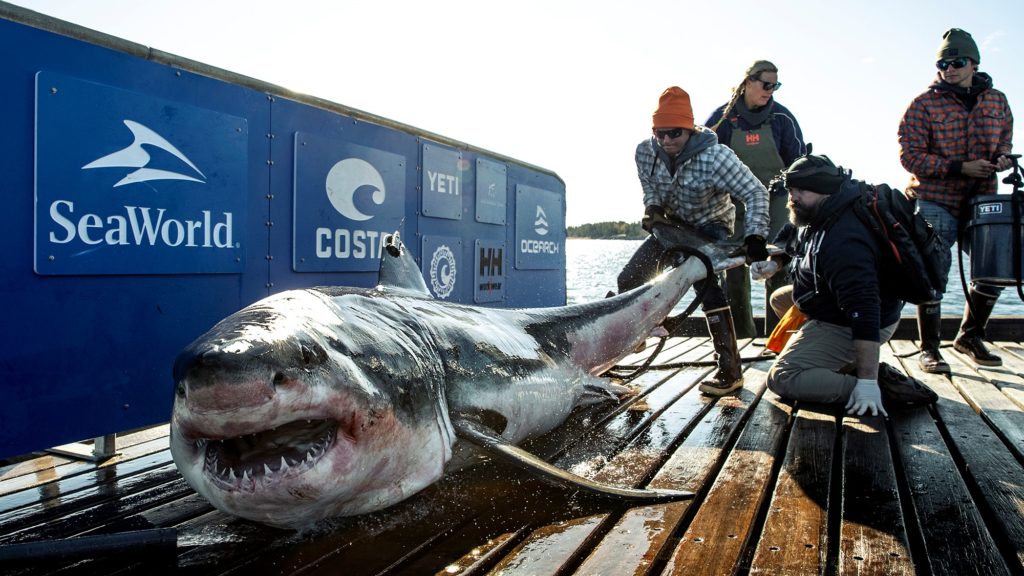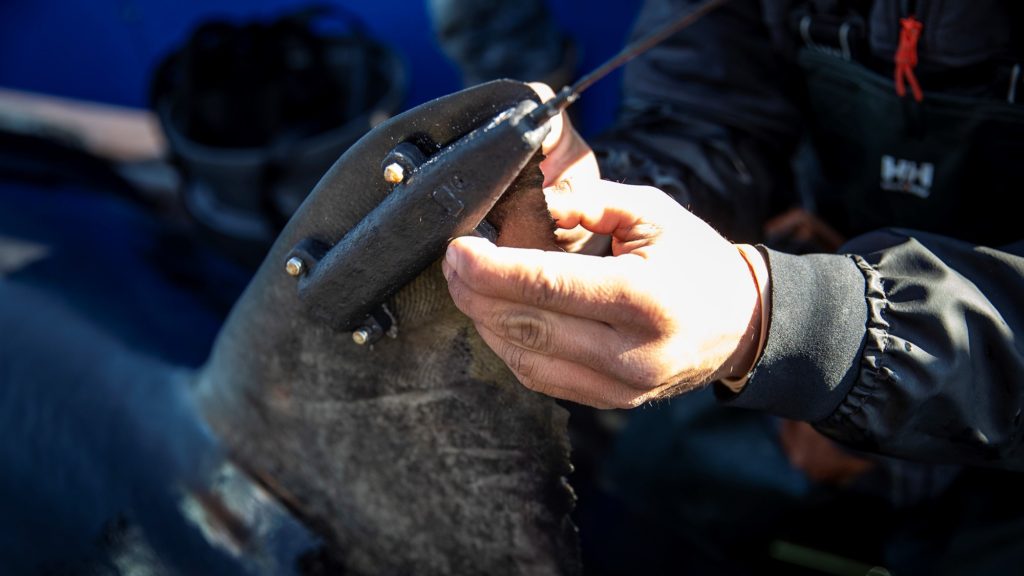Great White Sharks Just Visiting
Briana GibbsJanuary 13, 2020

The great white shark nicknamed ‘Ironbound’ when he was tagged off of Novia Scotia (Robert Snow via Key News)
A 12-foot, 998-pound great white shark nicknamed Ironbound made newspaper headlines when he came to call off Cape Florida/Bill Baggs State Park over the holidays, but researchers say there’s no cause for alarm.
The visit was “not common but not uncommon either,” said Dr. Neil Hammerschlag, director of the Shark Research and Conservation Lab (SRC) at the University of Miami Rosenstiel School of Marine and Atmospheric Science on Virginia Key. “This has been happening for a very long time. We’re just finding out now about it.”
He compared great white sharks to human snowbirds – summering in the north and then moving down the eastern seaboard come winter – and believes they are just passing through.
Ironbound was one of seven great whites tagged by OCEARCH, an ocean data collection agency, in its 2019 expedition off Nova Scotia and then tracked by satellite as they pinged their way south. Named after the island near which he was tagged on Oct. 3, Ironbound was located off Massachusetts five days later. By early December, he had reached Jacksonville and made his way along the Florida coast, nudging close to Jupiter on Dec. 20. Three days later at 8:45 am, a ping announced his arrival off Key Biscayne. He had traveled 1,473 miles in 103 days.

The SPOT tag on Ironbound which has allowed for tracking his location from where he was tagged in Nova Scotia all the way to the Florida Keys (Robert Snow via Key News)
He didn’t stop in Biscayne Bay for long, however, but continued south, pinged off Sugarloaf Key on Jan. 5, having traveled almost 100 miles in a little over a week. Researchers figured he was headed to the Gulf of Mexico like other great white sharks tracked before him.
No cause for alarm
Ironbound wasn’t the only great white shark spotted over the holidays. Charter boat fishermen pulled in a 13-foot great white weighing close to 1,000 pounds two miles off the coast of Fort Lauderdale on New Year’s Day. They compared it to seeing a unicorn.
After taking a few photos, they did a little citizen science by tagging the shark with a Gray Taxidermy tag, the only thing they had onboard. While he won’t be tracked by satellite, his travel history has been recorded.
Great white sharks may prompt images of “Jaws” or South African cage-diving adventures, but Key Biscayners shouldn’t be alarmed that a shark invasion is underway.
The big fish are not found year-round in local waters, which are warmer than they like. In addition, their prey species, including tuna, are often farther offshore. More common to south Florida are nurse, black tip, bull, lemon, sandbar, great hammerhead and tiger sharks.
Dr. Hammerschlag estimated that about one white shark a year is sighted off Florida beaches. His lab only encountered one great white during their shark-tagging trips back in 2013.
He said these sightings could be a good sign that the vulnerable species – the world’s largest predatory fish – may be recovering.


